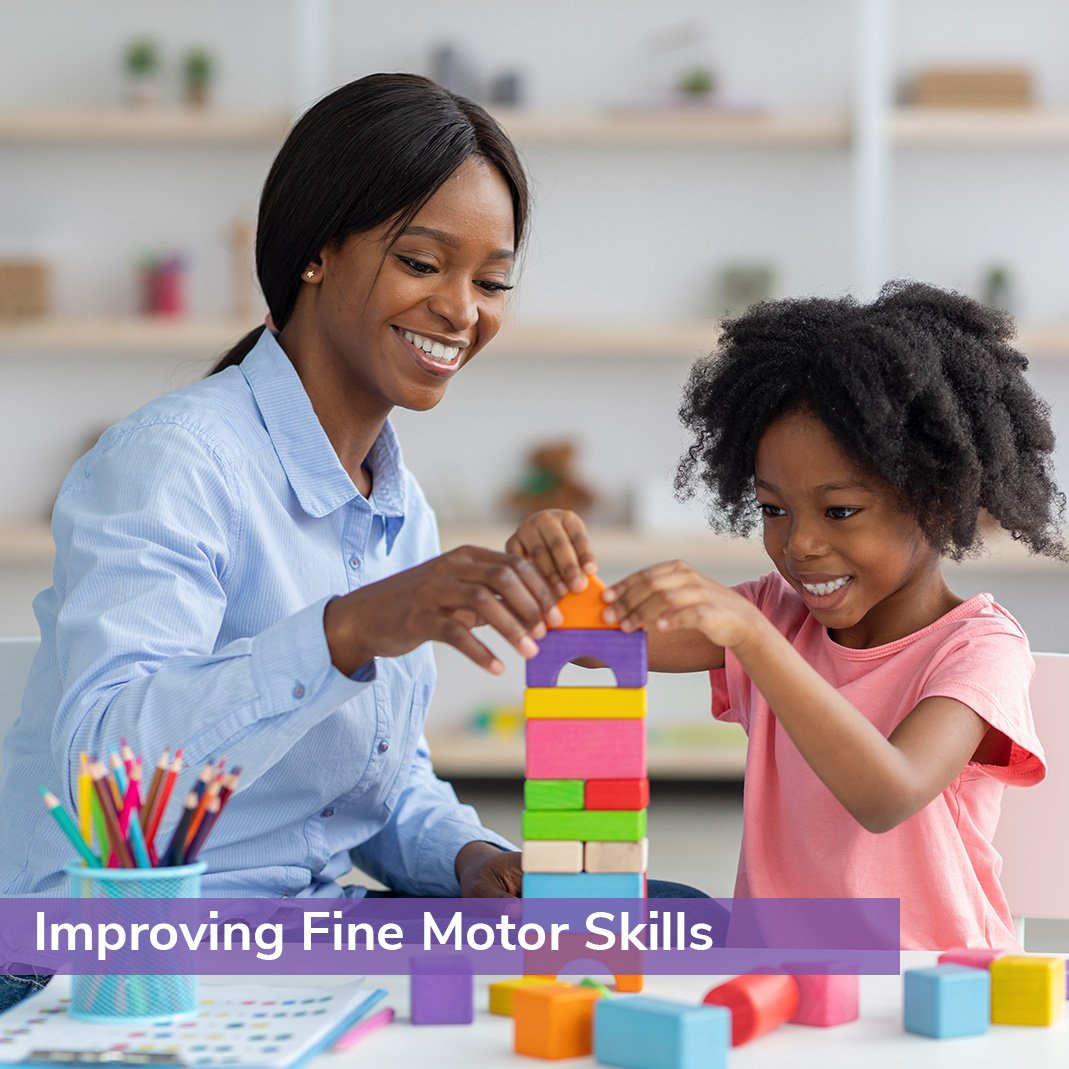Improving Fine Motor Skills
One important development milestone for children is a gradual improvement in fine motor skills. However, some children (and especially children with autism) can struggle with developing these skills to an age-appropriate level. This can be a source of frustration to the child, as well as to their parent or guardian. Today, we would like to share some ideas for improving fine motor skills in a stress-free and fun way, through several age groups.
Toddler (18 months to 3 years)
Use Stickers! Pick up some inexpensive dot stickers and let your kids decorate with them. Try writing their name on a large piece of paper and have them place the dot stickers along the lines. If they have other stickers that they prefer, have them decorate a coloring page with their stickers. It is the action of removing the stickers from the backing paper that exercises the small muscles in their hands and practices that pinching movement.
Make playdough work for you! Think of some simple prompts, such as a snake, a bug, or a snail, and ask your little artists to sculpt them. They will be using multiple fine motor skills to create their shapes, and the dough even provides a little resistance, which means their muscles are getting a workout.
Give button threading a try! Buttons are a great fine-motor tool, and you can use them in a lot of different ways. Stick a toothpick or some spaghetti into a lump of playdough so that it’s standing vertically, and then have your child practice dropping the buttons onto the toothpick. Or use pipe cleaners for a little more of a challenge! Your child will have to hold the pipe cleaner while also managing the buttons, which will work out their hand-eye coordination, pinching skills, and hand and finger strength. (Note: make sure that any activity involving small items, such as buttons, is fully supervised at all times.)
Preschool (3 years to 5 years)
Create a scissor “track”! Using scissors can be a great source of difficulty for a lot of children. Luckily, practicing can be a lot of fun! Grab a piece of paper and draw some lines all the way across it. Have your child practice cutting along those lines with child-safe scissors. Once they have the basics down (straight, wavy, jagged and uneven lines) switch it up by having them cut out shapes, letters, numbers, and even their favorite characters from coloring pages.
Raid your kitchen for transfer tools! Look for things like tongs, large spoons, or spatulas, and have your child move small objects suck as blocks or pompoms with them. For example, you could lay some blocks out on a tray, and have your child use tongs to move them into a bowl. If you’re working on other skills, such as color matching, this is a great opportunity to integrate that as well! You could have your child move all their green blocks to a green piece of paper, all their red blocks into a red bowl, etc.
Clothespins: not just for laundry! Clothespins are a great tool for practicing that pincer movement. Grab some cardboard or clean kitchen sponges and have your child clip the clothespin to the edges. Feel free to have fun with it! Cut the cardboard into interesting shapes, utilize different textures, and more.
Kindergarten and Beyond (5 years and up)
Spill the beans! Or rather, sort the beans. At this age, children are usually somewhat adept at picking up and moving small objects, so now it’s time to improve those skills even further. Have your children pick up dried beans or beads, and place them into a small opening, such as a water bottle. If that proves challenging, start with a larger opening, such as a muffin tin.
Get weaving! Use pipe cleaners and have your child weave them in and out of the openings on a kitchen cooling rack. This activity can be modified easily to suit your child’s ability level! For more of a challenge, try using ribbon instead of pipe cleaners. This activity works on the pinching motion, hand-eye coordination, and two-handed coordination.

